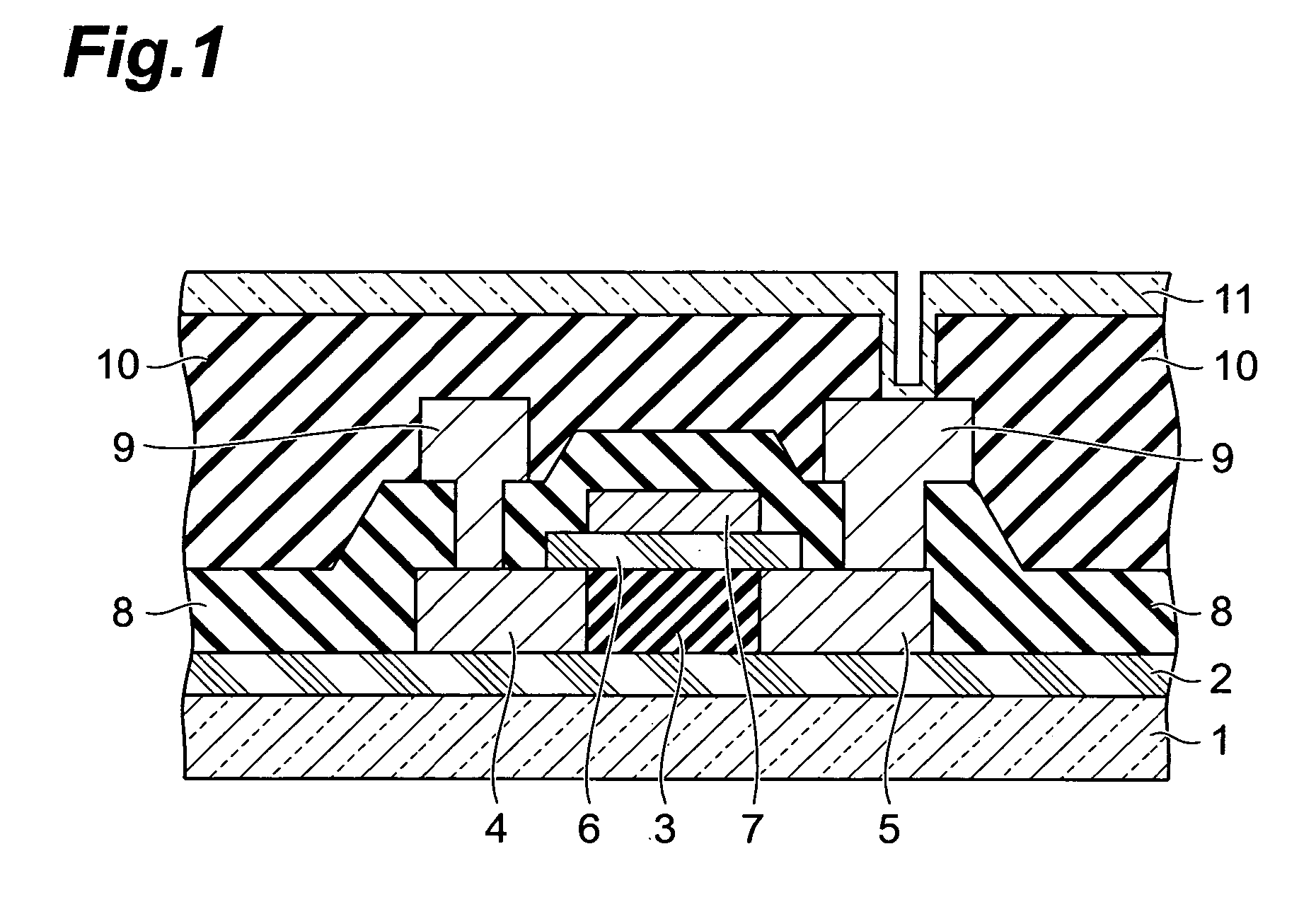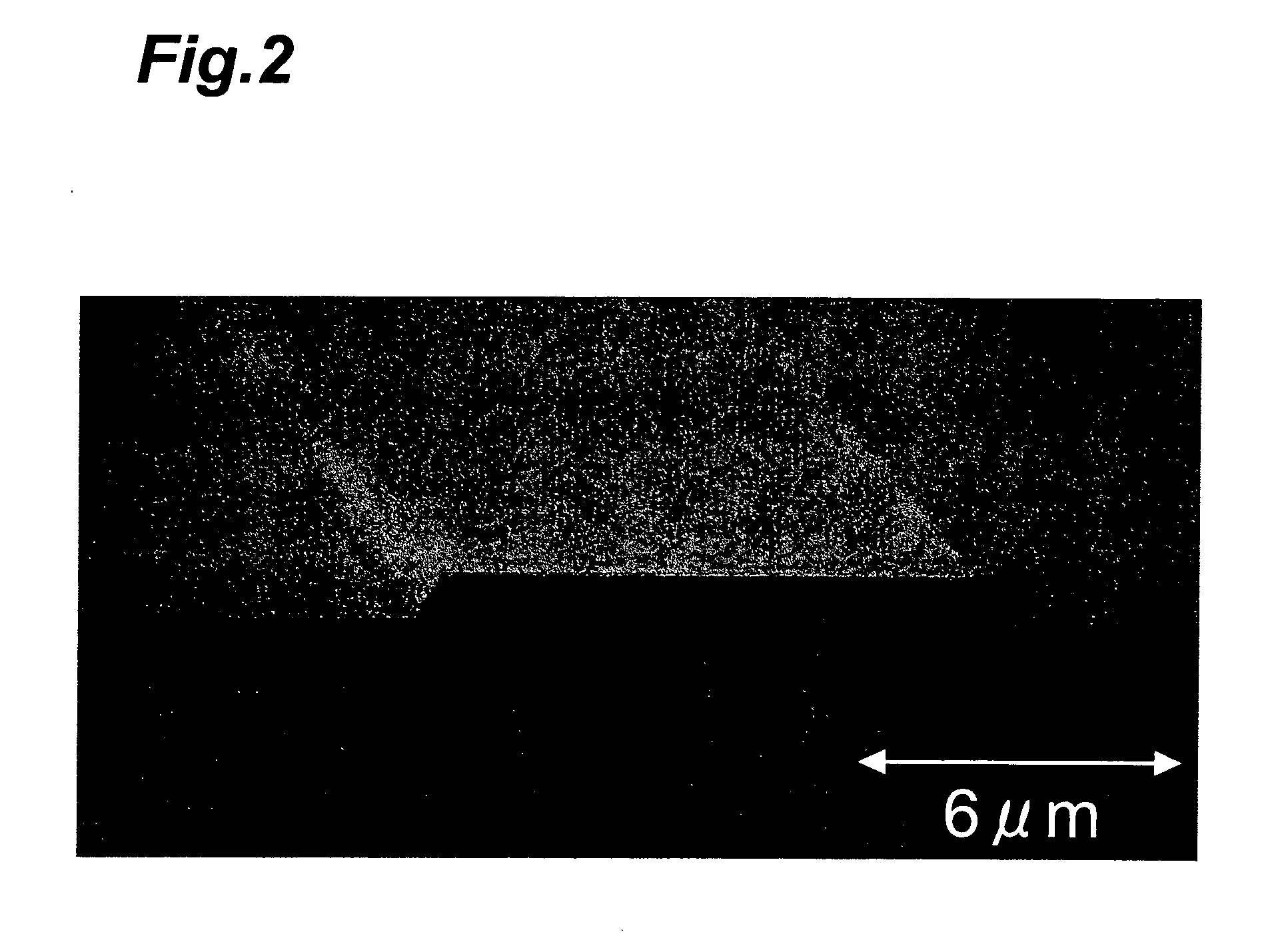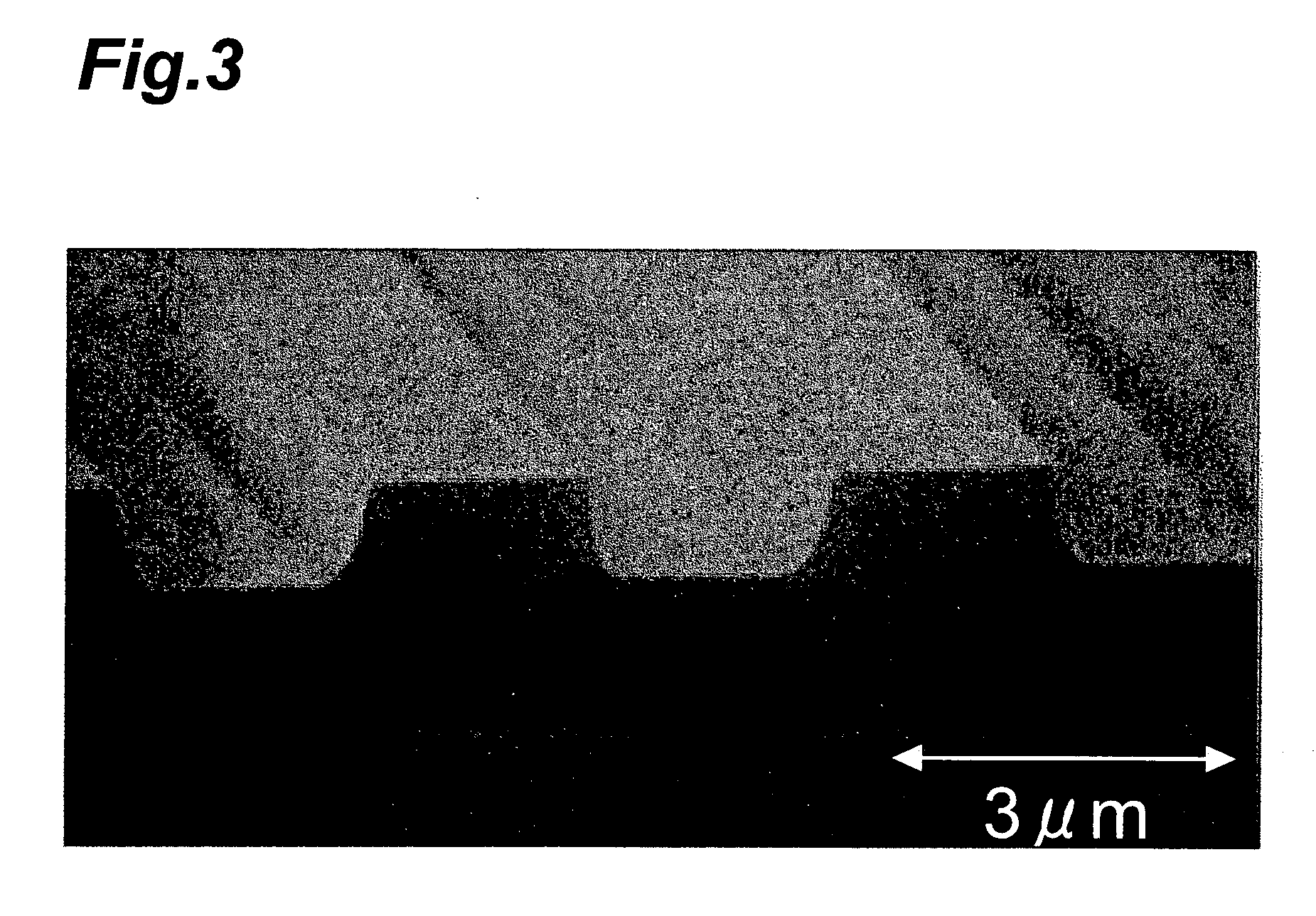Radiation curable composition, storing method thereof, forming method of cured film, patterning method, use of pattern, electronic components and optical waveguide
a technology of curable composition and forming method, which is applied in the direction of optical waveguide light guide, photomechanical apparatus, instruments, etc., can solve the problems of complex steps requiring humidification treatment, light exposure dose, and difficulty in dipping in purified water after exposure, so as to improve pattern precision and improve pattern precision. , the effect of rapid timing
- Summary
- Abstract
- Description
- Claims
- Application Information
AI Technical Summary
Benefits of technology
Problems solved by technology
Method used
Image
Examples
example 1
[0145] To a solution of 317.9 g of tetraethoxysilane and 247.9 g of methyltriethoxysilane in 1116.7 g of diethyleneglycol dimethyl ether there was added dropwise 167.5 g of nitric acid, prepared to 0.644 wt %, over a period of 30 minutes while stirring. After completion of the dropwise addition, reaction was conducted for 3 hours and then a portion of the produced ethanol and the diethyleneglycol dimethyl ether were distilled off under reduced pressure in a warm bath to obtain 1077.0 g of a polysiloxane solution. To 525.1 g of the polysiloxane solution there was added 74.9 g of diethyleneglycol dimethyl ether, and the mixture was dissolved by 30 minutes of stirring at room temperature (25° C.) to obtain a polysiloxane solution for a radiation curable composition. The weight-average molecular weight of the polysiloxane was 870 as measured by GPC. Next, 0.150 g of a photoacid generator (PAI-1001, product of Midori Kagaku) was added to 10.0 g of the radiation curable composition polysi...
example 2
[0147] To a solution of 317.9 g of tetraethoxysilane and 247.9 g of methyltriethoxysilane in 1116.7 g of diethyleneglycol dimethyl ether there was added dropwise 167.5 g of nitric acid, prepared to 0.644 wt %, over a period of 30 minutes while stirring. After completion of the dropwise addition, reaction was conducted for 3 hours and then a portion of the produced ethanol and the diethyleneglycol dimethyl ether were distilled off under reduced pressure in a warm bath to obtain 1077.0 g of a polysiloxane solution. To 525.1 g of the polysiloxane solution there was added 53.0 g of diethyleneglycol dimethyl ether, a tetramethylammonium nitrate aqueous solution prepared to 2.38 wt % (pH 3.6) and 3.0 g of water, and the mixture was dissolved by 30 minutes of stirring at room temperature (25° C.) to obtain a polysiloxane solution for a radiation curable composition. The weight-average molecular weight of the polysiloxane was 830 as measured by GPC. Next, 0.193 g of a photoacid generator (P...
example 3
[0149] To a solution of 74.77 g of tetraethoxysilane and 128.68 g of methyltriethoxysilane in 437.86 g of cyclohexanone there was added dropwise 58.71 g of nitric acid, prepared to 0.644 wt %, over a period of 10 minutes while stirring. After completion of the dropwise addition, reaction was conducted for 3 hours and then a portion of the produced ethanol and the cyclohexanone were distilled off under reduced pressure in a warm bath to obtain 343.62 g of a polysiloxane solution for a radiation curable composition. The weight-average molecular weight of the polysiloxane was 1020 as measured by GPC. Next, 0.042 g of a photoacid generator (PAI-101, product of Midori Kagaku) was added to 5.0 g of the radiation curable composition polysiloxane solution to prepare a radiation curable composition. The amount of component (a) used was 20 wt % with respect to the total radiation curable composition, and the amount of component (b) used was 0.8 wt % with respect to the total radiation curable...
PUM
| Property | Measurement | Unit |
|---|---|---|
| Temperature | aaaaa | aaaaa |
| Surface energy | aaaaa | aaaaa |
| Temperature | aaaaa | aaaaa |
Abstract
Description
Claims
Application Information
 Login to View More
Login to View More - R&D
- Intellectual Property
- Life Sciences
- Materials
- Tech Scout
- Unparalleled Data Quality
- Higher Quality Content
- 60% Fewer Hallucinations
Browse by: Latest US Patents, China's latest patents, Technical Efficacy Thesaurus, Application Domain, Technology Topic, Popular Technical Reports.
© 2025 PatSnap. All rights reserved.Legal|Privacy policy|Modern Slavery Act Transparency Statement|Sitemap|About US| Contact US: help@patsnap.com



